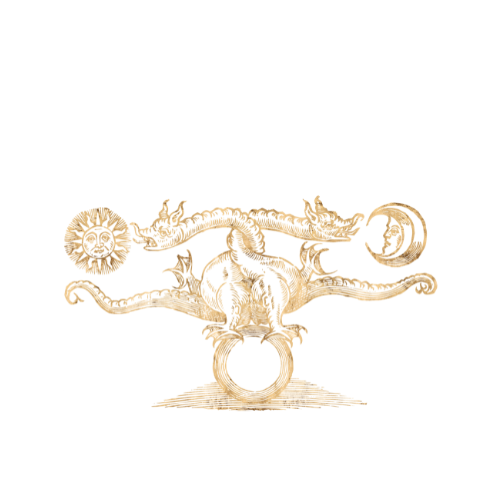Astrology for the Future
Image: Hilma af Klint
This text is the Introduction to the Celestial Bodies Oracle guidebook, released 2021. Cristina Farella is the deck’s consulting astrologer, and author of the guidebook’s astrological content.
In the beginning, we had stories. Humans lived in concert with the natural world. We navigated seas, planted crops, and celebrated sacred rites, all in accordance with the maps of the heavens. The natural world provided us with food, medicine, and shelter. Mysteries of life and death were encountered head-on. Origin stories proliferated. Deities were seen in river and shadow, tree and field. The visible, sensual world was a place of both myth and reality, and for thousands of years, we lived this way.
Most important were the luminaries of day and night, the Sun and Moon, bodies that moved in a patterned sky dance, the Sun holding its golden shape daybreak to dusk, the Moon bending and reflecting in silver its bright rays. Planets too were visible in the heavens, each given names for the gods of myth. Constellations cloaked these bodies in webs of distant pearl. Every early civilization saw the clusters of stars as discernible shapes that told stories of human life, and lore of the divine. All of life was caught in that narrative: light and shadow, exaltation and underworld, the fertility of dream, the follies of king and shepherd alike.
From the mere experience of living in a world where the cosmos loomed large and bright, we developed systems of thought based in the heavens. Stargazers, our first philosophers and scientists, observed rhythms of cyclic stellar movement. Because we were inextricably linked to the natural world, we began to realize that the planets impacted us, our temperaments, our bodies, and our futures.
It is an idea as old as Babylon, that being born at a particular moment confers upon the individual life a kind of signature. Recall the Hermetic phrase Quod est inferius, est sicut quod est superius—“as above so below.” Our lives, psyches, and cycles of being have forever been thought to mirror the movement of the bodies in the heavens, proof of the link between microcosm and macrocosm, human and cosmos.
The Enlightenment sought to quash ways of being it considered irrational, magical, or simply pagan. A preference for the scientific and individualistic took root, silencing traditional ways of understanding and interacting with the world. Magic, as always, prevailed, but official attitudes toward astrology had turned cold.
This is a critical time. Faced with the terrific onslaught of inequality, social upheaval, economic and environmental instability, we are unsure what the future holds. To rescue the Earth, we must reconnect with her, and admit that we can’t live without her. For we are not here to capitalize on her bounty. In an effort to secure a sustainable future, thoughts must turn increasingly toward the Earth. And in this challenge we find an invitation which demands that people draw themselves nearer to ancient custom.
Heaven and life on earth are inseparable; hence the natal chart serves to refer to the moment that each of us took her first breath: the 360° natal wheel captures the planets whose configurations lend themselves to narrative, for instance regarding individual strengths and challenges (shadows), our talents and our struggles. The natal wheel is a reminder that we contain all archetypes within—healer and mage, poet and judge. Appreciating how this story is represented in the chart is a serious endeavor which nonetheless need not be taken too seriously: rather, picture your chart as an aura hovering over the shoulders, a tapestry of cosmic possibility.
Engaging the stars puts us in conversation with our environment whole. Regardless of whether we are looking for the Moon in Manhattan or in rural Oregon, in Lisbon or on the arctic deserts of Iceland, we are in search of connection with the celestial bodies. When we learn about the depth of our natal charts, we remember our unique complexity, and this in turn creates space for appreciating the complexity of others. Our historical moment is one in which information moves fast, while our reactions are faster still. It is a crucial exercise, thus, to seek out acts of connection, recognition, and compassion.
I am an astrologer drawn to this ancient art as an extension of my commitment to the occult at large, yet also as an extension of my love for poetry, dream, painting, and my greater love of the imagination itself. Astrological concepts permeate artworks, for they are the basis of the archetypes which we continue to encounter each day, in this oh so “rational” age.
My favorite poet is Sappho; she is the ancient Greek songstress of love and lamentation, and her world was pagan. She and her contemporaries perceived the divine in the world around them, and in the faces of their lovers. This spark of connectivity is reason enough to embark on the journey of understanding one’s stars and the stars of others. As above, so below.


